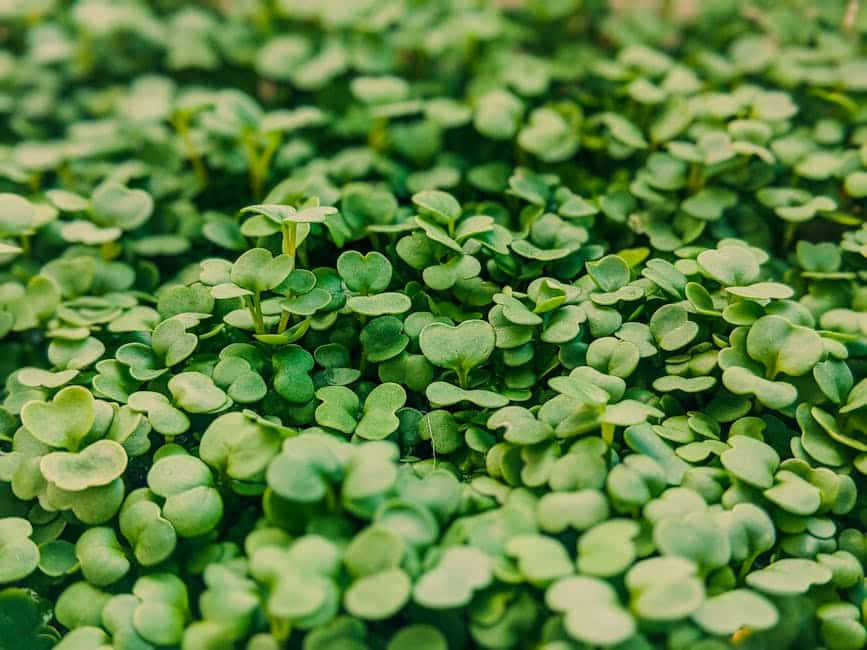How to Grow Hydroponic Microgreens
Microgreens are nutrient-packed, flavorful, and vibrant young plants that have gained popularity in recent years. These tiny greens are harvested when they are only a few inches tall, making them a perfect addition to salads, sandwiches, and garnishes. While they can be grown in soil, hydroponic systems offer numerous advantages for cultivating microgreens, such as faster growth, better control over nutrient levels, and the ability to grow them indoors year-round. In this article, we will explore the various techniques and tips for growing hydroponic microgreens.
Selecting the Right Seeds
The first step in growing hydroponic microgreens is choosing the right seeds. It is essential to select seeds labeled specifically for microgreen production, as these varieties are harvested at a very young stage, usually within 7 to 14 days. Some popular microgreen seeds include broccoli, radish, sunflower, pea shoots, wheatgrass, amaranth, and kale. These seeds are readily available online or at local gardening stores.
Choosing a Hydroponic System
There are several hydroponic systems suitable for growing microgreens. The choice of system depends on factors such as available space, budget, and personal preference. Let’s explore some popular hydroponic systems for growing microgreens:
Nutrient Film Technique (NFT)
The Nutrient Film Technique (NFT) is a popular hydroponic system that involves a continuous flow of nutrient-rich water over a sloping tray. The microgreens are grown on the tray, and the excess water is collected and recirculated. NFT systems are efficient in nutrient delivery and are suitable for growing a wide variety of microgreens.
Deep Water Culture (DWC)
Deep Water Culture (DWC) is another commonly used hydroponic system for microgreens. In DWC, the microgreens are suspended in a nutrient solution with their roots submerged. Oxygen is provided through the use of air stones or diffusers. DWC systems are easy to set up and maintain, making them ideal for beginners.
Drip Irrigation
Drip irrigation systems involve the use of a pump that delivers nutrient solution to individual plants through drip emitters. This method ensures precise nutrient delivery and is suitable for larger-scale microgreen production.
Aeroponics
Aeroponic systems utilize misters or sprayers to deliver nutrient solution directly to the roots of microgreens. This method provides optimal oxygenation to the roots and promotes rapid growth. Aeroponics is a more advanced hydroponic system and requires careful monitoring and maintenance.
Setting up the Hydroponic System
Once you have chosen a hydroponic system, it’s time to set it up. Here are some general steps to follow:
- Prepare the growing tray or containers: Ensure they are clean and free from any contaminants.
- Choose the appropriate growing medium: Common growing mediums for microgreens include rockwool cubes, coco coir, perlite and vermiculite mix, or oasis cubes.
- Soak the growing medium: Follow the manufacturer’s instructions to properly hydrate the growing medium before planting the seeds.
- Plant the seeds: Scatter the seeds evenly on the growing medium, ensuring good seed-to-medium contact. Lightly press the seeds into the medium to secure them.
- Provide adequate lighting: Use full-spectrum LED grow lights to ensure proper photosynthesis and growth. Maintain a consistent light schedule of 12-16 hours per day.
- Maintain proper nutrient levels: Follow the manufacturer’s instructions to prepare a balanced nutrient solution. Monitor and adjust the pH levels to ensure optimal nutrient uptake.
- Water and humidity control: Avoid overwatering by providing enough moisture for the microgreens without saturating the growing medium. Maintain a humidity level of around 50-70%.
- Monitor growth and development: Regularly check the microgreens for signs of growth and monitor their overall health. Adjust lighting, nutrient levels, and watering as needed.
- Pest and disease management: Practice proper hygiene and cleanliness to prevent pests and diseases. Remove any affected microgreens immediately to avoid spreading.
- Harvesting and storage: Harvest the microgreens when they reach the desired size, typically around 7 to 14 days from planting. Cut them just above the soil line and store them in airtight containers in the refrigerator.
Conclusion
Growing hydroponic microgreens is an exciting and rewarding endeavor. By choosing the right seeds, selecting an appropriate hydroponic system, and following the proper setup and maintenance techniques, you can enjoy a continuous supply of fresh and nutritious microgreens. Experiment with different varieties and hydroponic systems to find the combination that works best for you. Happy growing!
Related Websites:
- Hydro Garden Geek – Grow Microgreens Hydroponically
- Why Farmit – Hydroponic Microgreens
- The Fresh Grow – Hydroponic Microgreen Cultivation
- Canada Grow Supplies – How to Grow Microgreens Hydroponically
- Hydroponic Horizons – Soil vs Hydroponic Microgreens
- Hydroponic Way – How to Grow Microgreens Hydroponically
- Hydrobuilder – Growing Hydroponic Microgreens
FAQs:
Q: What are the benefits of growing hydroponic microgreens?
Growing hydroponic microgreens offers several benefits including faster growth, higher nutrient density, year-round cultivation, and water efficiency.
Q: How do I choose the right hydroponic system for growing microgreens?
When selecting a hydroponic system for microgreens, consider factors such as space availability, budget, ease of use, and desired growth capacity. Options include nutrient film technique (NFT), deep water culture (DWC), and vertical systems.
Q: What are the factors to consider when choosing microgreens for hydroponic cultivation?
When choosing microgreens for hydroponic cultivation, consider factors such as flavor, growth characteristics, nutritional value, and personal preferences. Popular choices include broccoli, radish, sunflower, and pea microgreens.
Q: How do I set up a hydroponic microgreens garden?
To set up a hydroponic microgreens garden, you will need essential equipment such as trays, growing medium, pH tester, and a water supply. Follow a step-by-step guide on choosing the right containers, preparing the growing medium, and adjusting environmental conditions like temperature, humidity, and light.
Q: When and how should I harvest hydroponic microgreens?
Harvest hydroponic microgreens when they reach the desired height of 1-2 inches. Use clean scissors to cut the stems just above the growing medium. Enjoy them fresh in salads, sandwiches, smoothies, or as a garnish for added flavor and nutrition.






